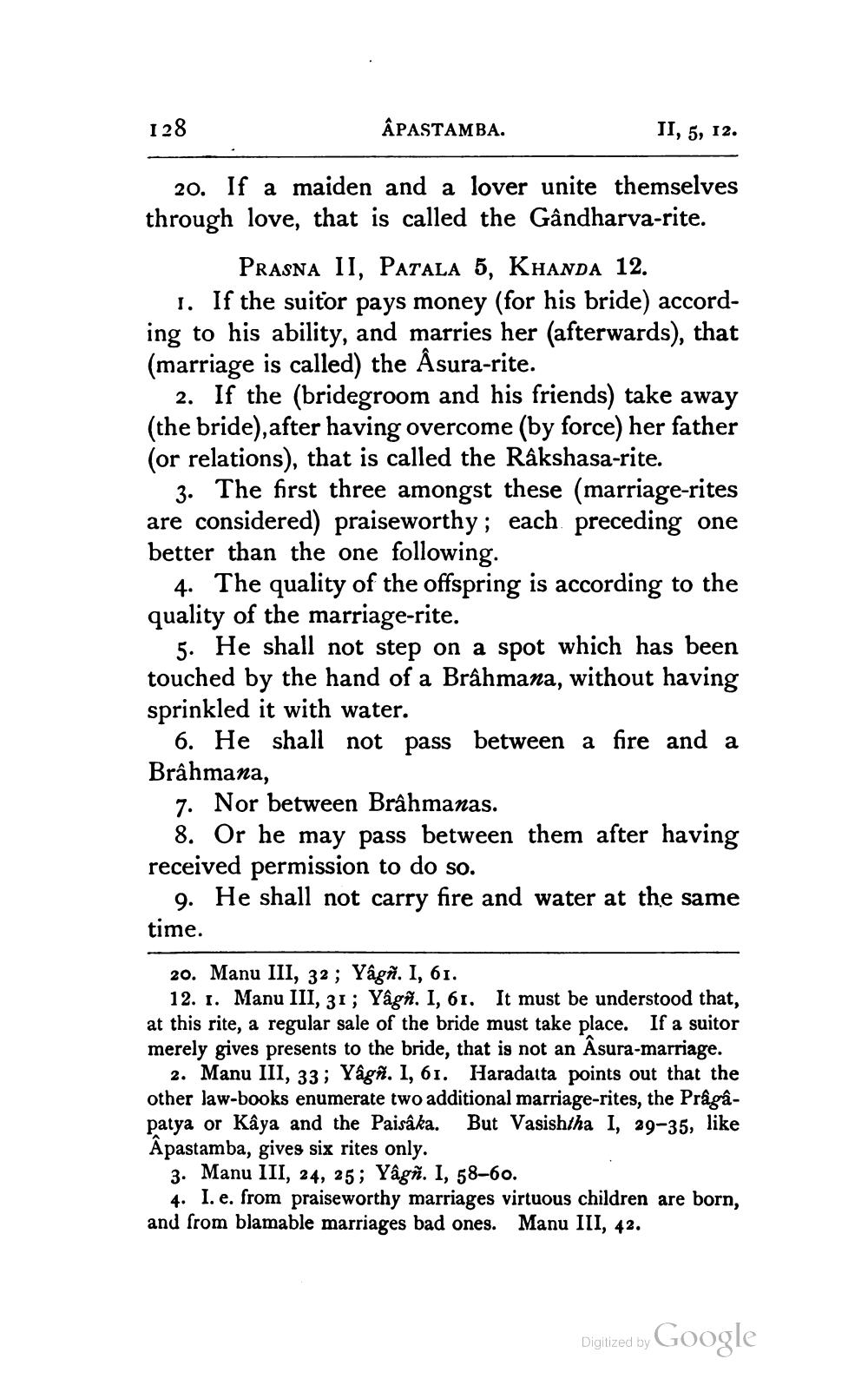________________
128
ÂPASTAMBA.
II, 5, 12.
20. If a maiden and a lover unite themselves through love, that is called the Gândharva-rite.
PRASNA II, PATALA 5, KHANDA 12.
1. If the suitor pays money (for his bride) according to his ability, and marries her (afterwards), that (marriage is called) the Âsura-rite.
2. If the (bridegroom and his friends) take away (the bride), after having overcome (by force) her father (or relations), that is called the Râkshasa-rite.
3. The first three amongst these (marriage-rites are considered) praiseworthy; each preceding one better than the one following.
4. The quality of the offspring is according to the quality of the marriage-rite.
5. He shall not step on a spot which has been touched by the hand of a Brâhmana, without having sprinkled it with water.
6. He shall not pass between a fire and a Brahmana,
7. Nor between Brâhmanas.
8. Or he may pass between them after having received permission to do so.
9. He shall not carry fire and water at the same time.
20. Manu III, 32; Yâgñ. I, 61.
12. 1. Manu III, 31; Yâgñ. I, 61. It must be understood that, at this rite, a regular sale of the bride must take place. If a suitor merely gives presents to the bride, that is not an Âsura-marriage.
2. Manu III, 33; Yâgñ. 1, 61. Haradatta points out that the other law-books enumerate two additional marriage-rites, the Prâgâpatya or Kâya and the Paisâka. But Vasishtha I, 29-35, like Apastamba, gives six rites only.
3. Manu III, 24, 25; Yâgn. I, 58-60.
4. I. e. from praiseworthy marriages virtuous children are born, and from blamable marriages bad ones.
Manu III, 42.
Digitized by
Google




